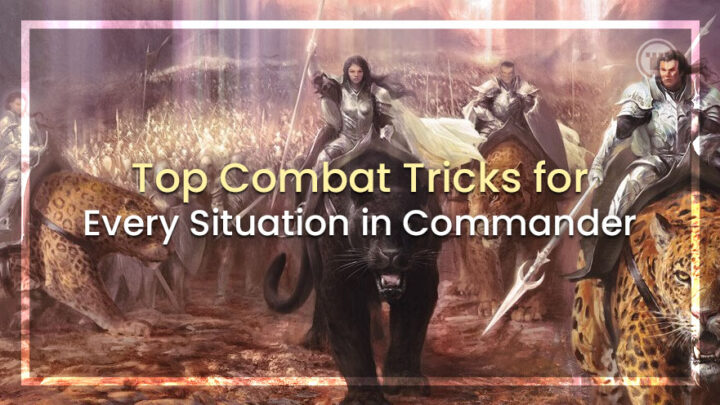What makes a particular combat trick special? Must it create a blowout or just maximize the efficiency these cards are known for? Or is a great combat trick one that exceeds our expectations, generating additional resources or utility beyond its combat application? These questions make it difficult to identify the best combat tricks in Commander.
One thing you notice trying to rank thousands of combat tricks is that the rate on these cards has been remarkably stable over the years. There’s not many obvious outliers that are straight-up more efficient than their peers.
This leaves us to choose between many slight variants of the main effect, any of which might outperform the others depending on what archetype and style of deck you’re playing. So, I made a few executive decisions in the name of better content.
The result might not be as dramatic as trying to guess which card will be revealed at No. 1 all-time, but I hope the utility of a full combat-trick armory makes it a worthwhile read nonetheless.
INDESTRUCTIBLE
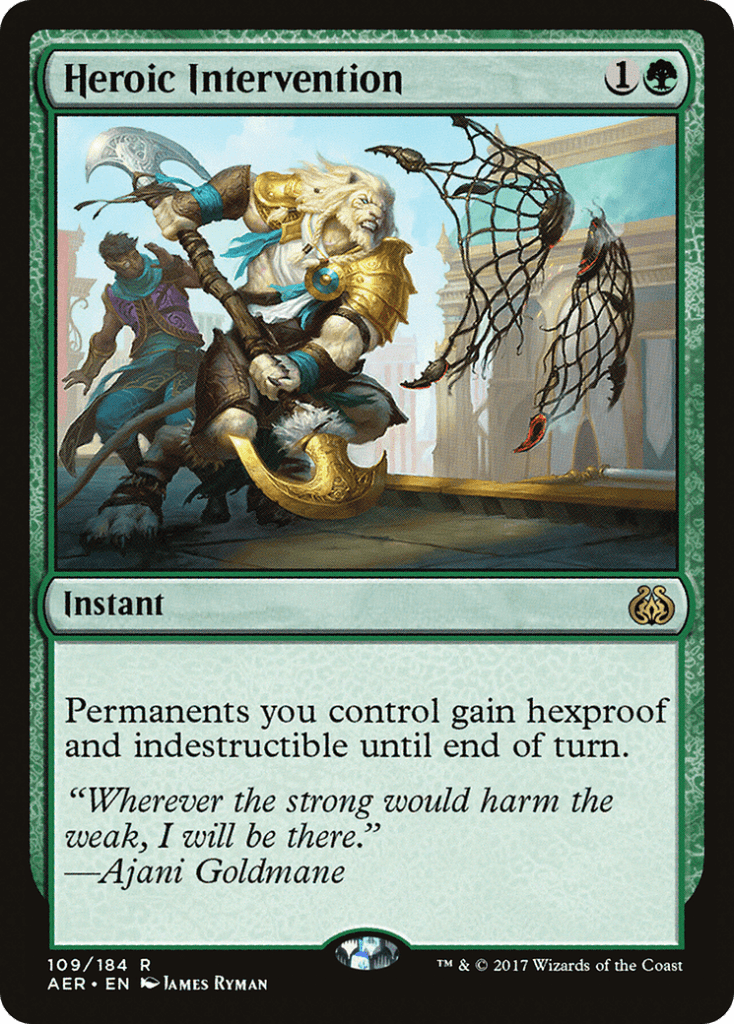
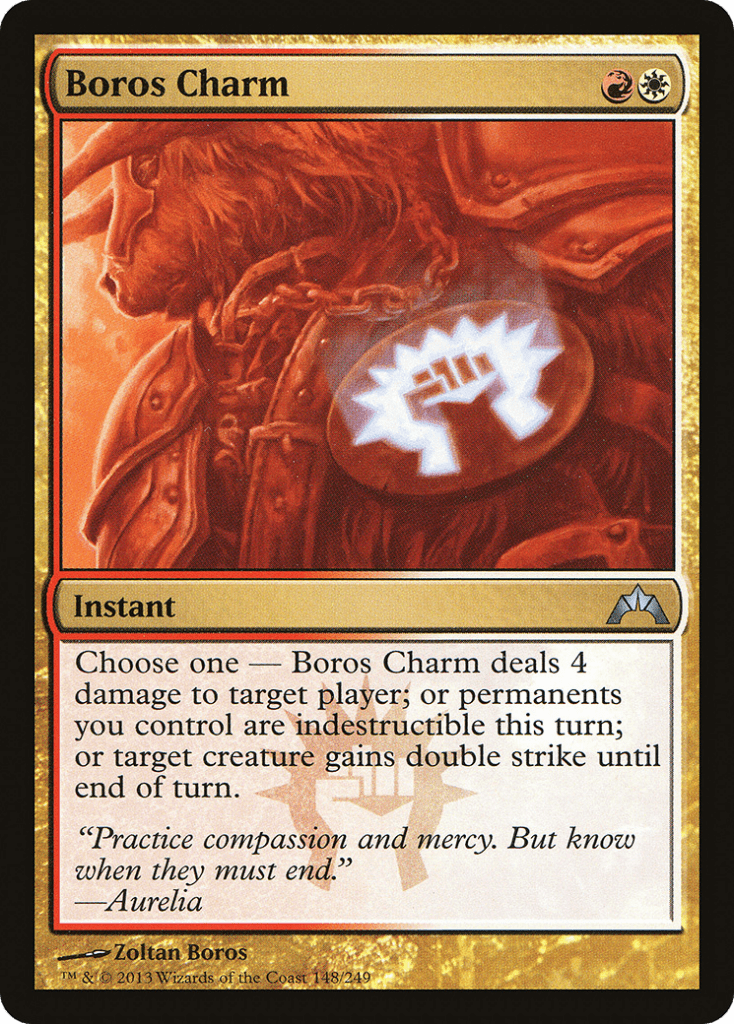
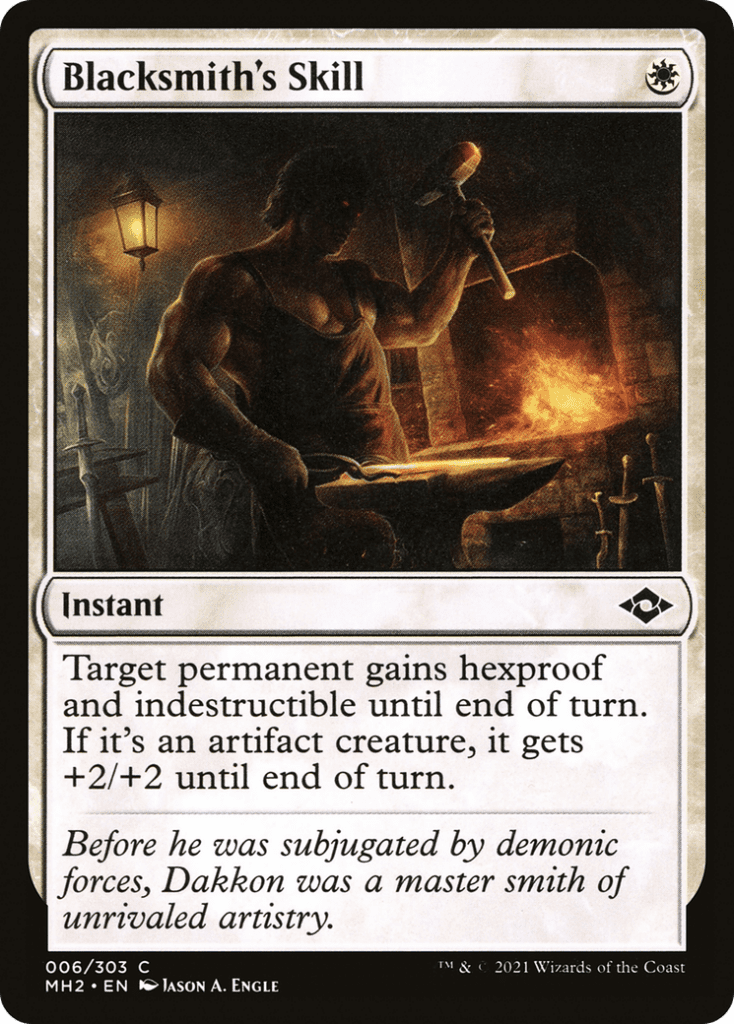
Indestructible tricks have a notable out-of-combat use: they let non-blue decks counter “destroy” or damage-based removal. This can be game winning when it’s a team-wide trick like Heroic Intervention countering a sweeper, a scenario which often leaves your opponent out of resources and unable to respond to the blowout.
In-combat, their use is to trump a potential trade and keep your creature around — but they don’t do anything inherently to make trades happen or otherwise push damage. So, it’s best to play them with creatures that are naturally prone to trading and/or choose tricks that grant offensive stats and keywords alongside indestructible, like Boros Charm or Blacksmith’s Skill.
PROTECTION FROM (OPPONENT)
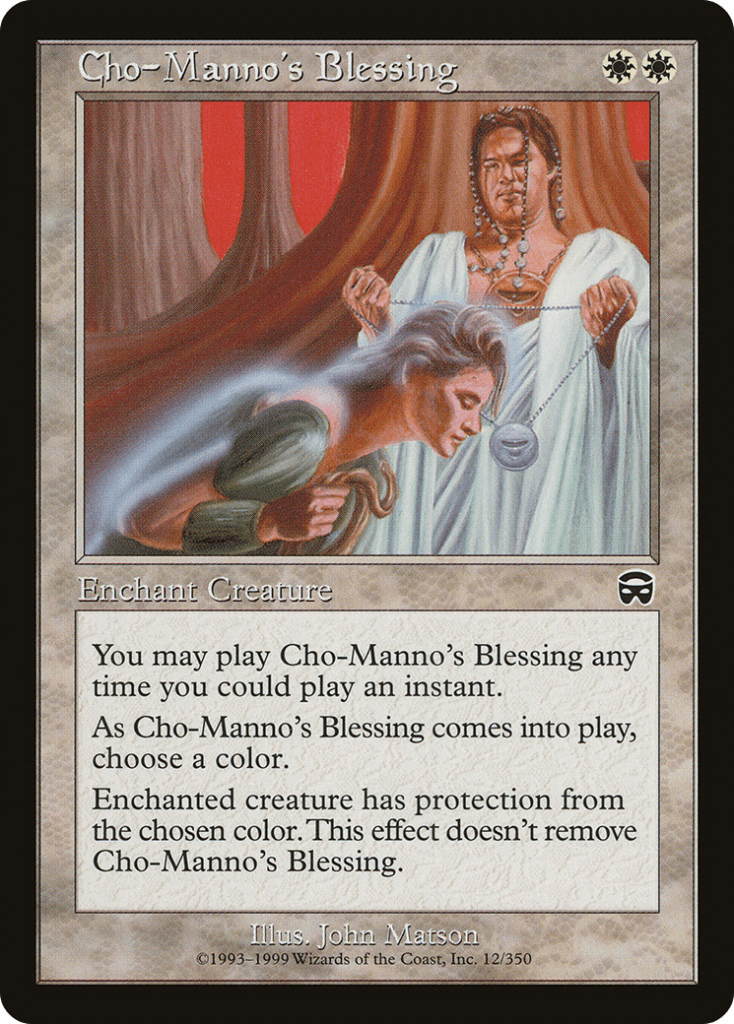
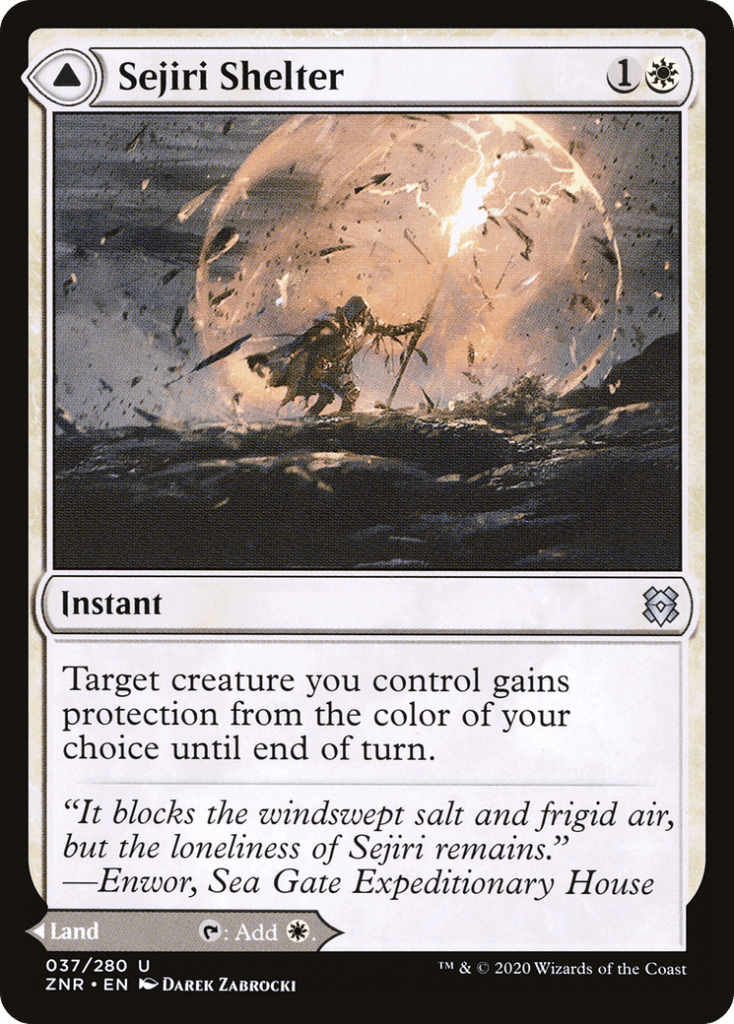

A color-exclusive category of combat trick, protection tricks are among the most powerful and flexible spells white can access. Each one is essentially a modal spell. Depending on when and how you cast them, the results could be any of “target creature gains hexproof,” “prevent all damage that would be dealt to target creature,” “destroy all auras attached to target creature” or “target creature can’t be blocked” — among others.
Sejiri Shelter also aims to improve on the underlying issues of playing purely reactive cards that are also dead when you’re without creatures to target. In this case, turning the trick into a modal double faced card gives you something else to do with it when the protection isn’t needed.
Akroma’s Will isn’t even a card I wanted in this article; not because it isn’t amazing in Commander, but because in my eyes it’s not a combat trick. If you’re in a good spot to cast it, you almost always want to cast it before combat (or at least before blocks) to leverage the evasion and Lifelink. But if I leave a card this nutty off the list, I imagine it would feel incomplete to a lot of players, and so I bow to its obvious power.
‘UNDYING’
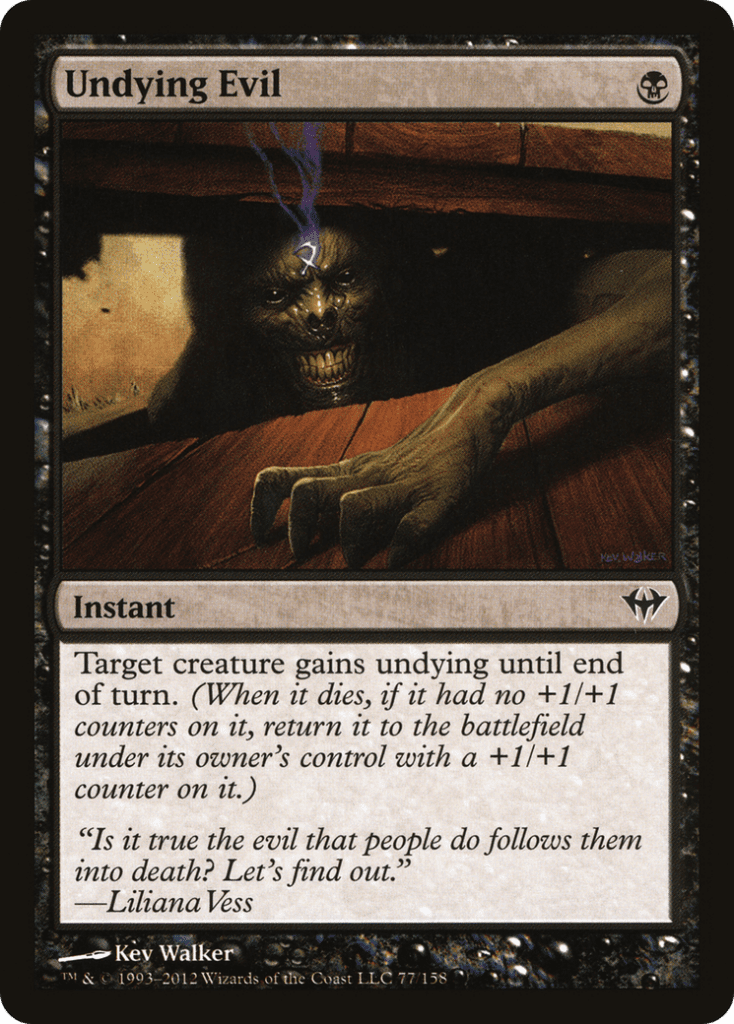

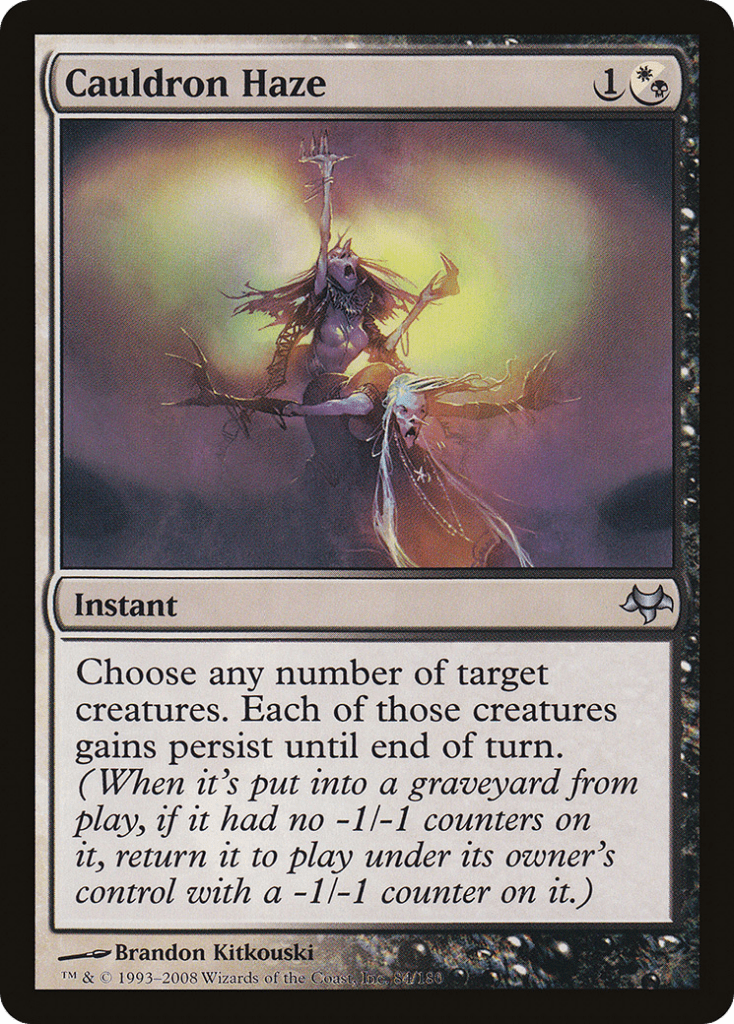
Why the scare-quotes on “Undying”? Because undying is a spooky, scary mechanic… but also because there are a bunch of closely related effects that return creatures to the battlefield upon death without utilizing the specific Undying keyword.
Undying Evil is the baseline (or Undying Malice if you don’t want to worry about +1/+1 counters mucking up the trigger). Fake Your Own Death and Infuse with Vitality cost a little more but offer you some bonus resources and additionally buff the target creature to ensure it will “trade” with something on its way out.
Cauldron Haze is the team-wide version, still for only two-mana, and is just as good for shrugging off sweepers — or even a consequence-free sacrifice train of all your creatures to seize the bonus value.
POWER/TOUGHNESS PUMP

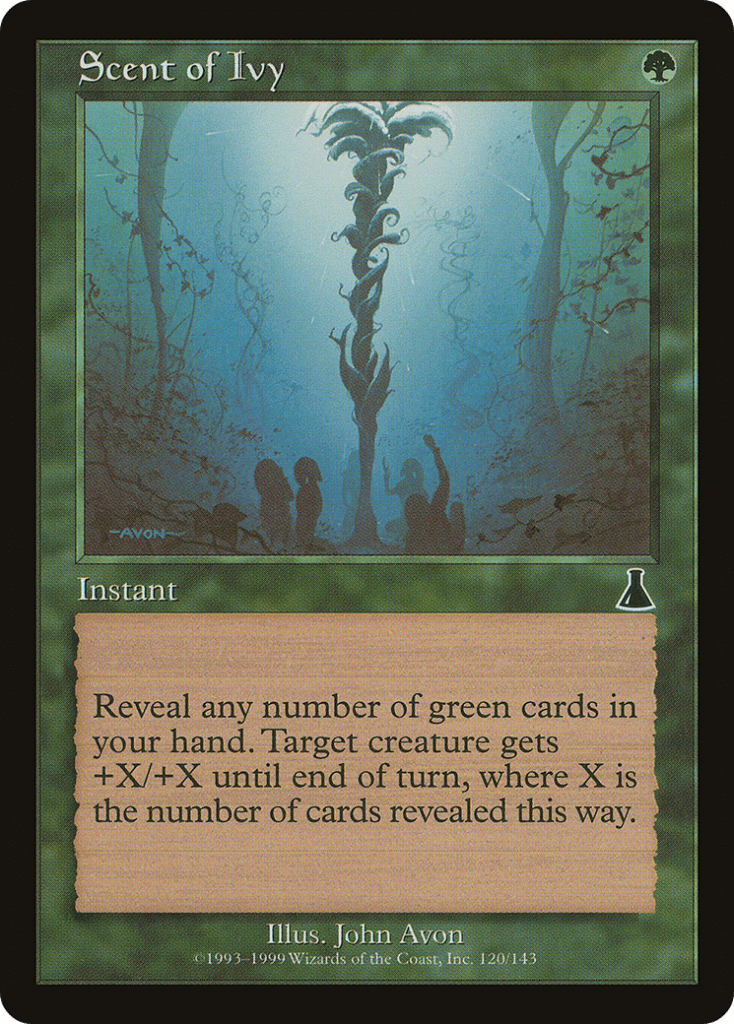
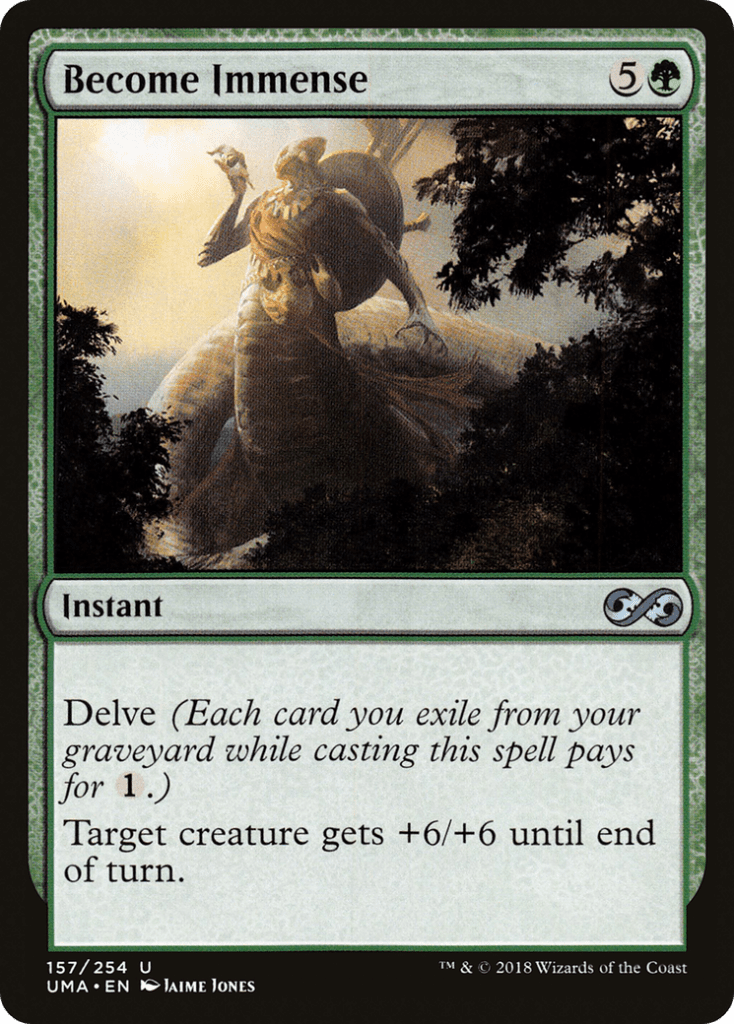
Cleaving the closest to the original design of Giant Growth, this kind of trick is simply about boosting power and toughness as much as possible. Sometimes they end up being equivalent to +X/+0 tricks and just push you toward a surprise, lethal attack. But sometimes that extra toughness can let your creature survive a damage spell or crush a pivotal trade.
With such a straightforward effect, you’re looking to maximize efficiency in the context of your specific archetype. Aspect of Hydra and Scent of Ivy are incredibly efficient in mono-green or mostly-green decks. Meanwhile, Become Immense is probably the best bang-for-buck option at one mana — and Mutagenic Growth is the best for zero mana.
There’s also probably at least one excellent synergistic option for every creature-deck archetype you can think of: Resolute Strike for equipment, Seeds of Strength for heroic creatures, Might of Alara for five-color/domain or Might of the Masses for go-wide decks.
ALL-IN POWER



At first thought, it may not seem worth separating the “+X/+0” spells from the “+X/+X” effects above, but they really are very different classes of card when you think about it. Since pumping toughness is mostly relevant for trades between creatures, those spells are designed to be cast at any point in the game, even reactively. Paying more than a single mana is hard to justify because you lose that flexibility to win the trade whenever it’s required.
Compare that to a “+X/+0” trick. Without granting First Strike or some other keyword, playing this in creature combat usually means a 1-for-2 trade against you. And spending a card to boost the damage of an unblocked attacker (even multiple attackers) is an incredibly aggressive move, even if you you’re confident it will resolve.
The only way to justify this sort of play is if it sets up lethal damage, either right there or on your next swing (because then it at least constrains your opponent’s decision to counterattack).

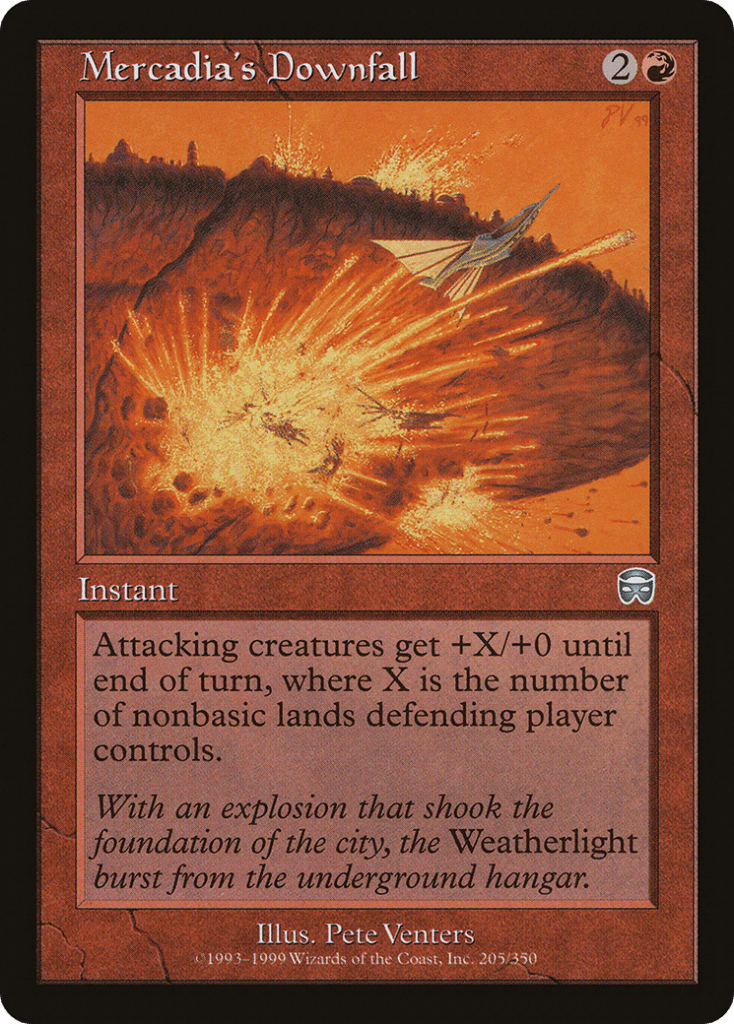
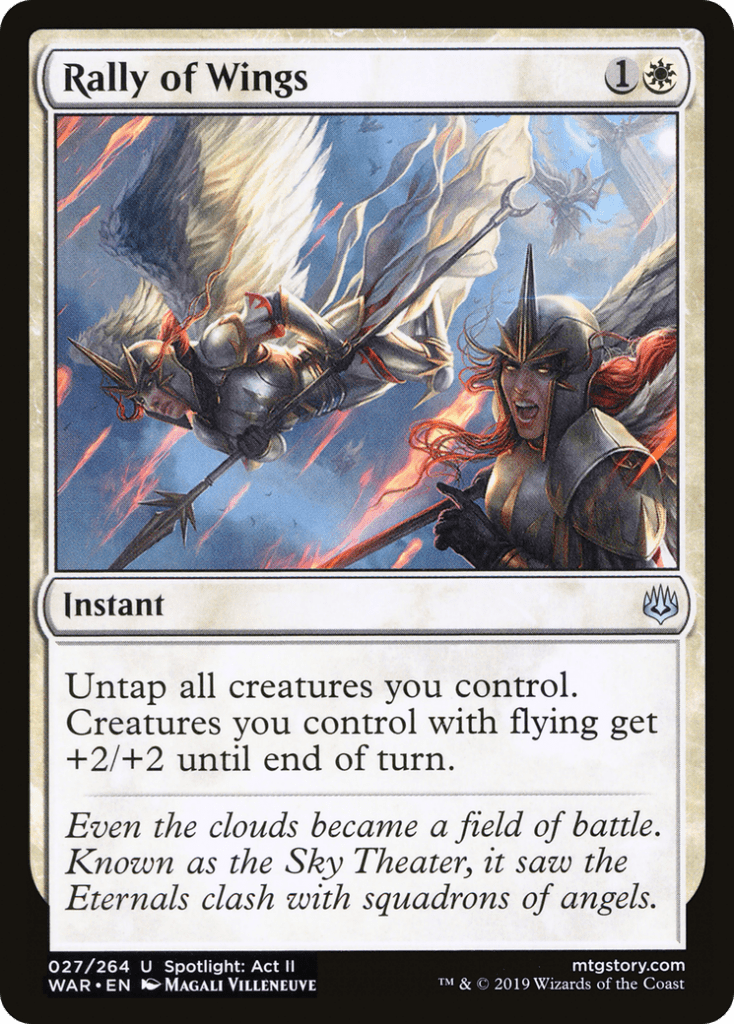
When you plan on it being the final play of the game, you don’t mind so much what your trick costs or how much setup it takes. Discarding your hand, killing your creatures, paying all your mana and life… doesn’t matter.
You can’t take it with you, and your opponent will still be the one worse off when the dust settles! That doesn’t mean efficiency is never a concern, but especially when you’re building for a multiplayer format like Commander, you really need to aim high to make sure these kill the table.
FIRST STRIKE/DOUBLE STRIKE
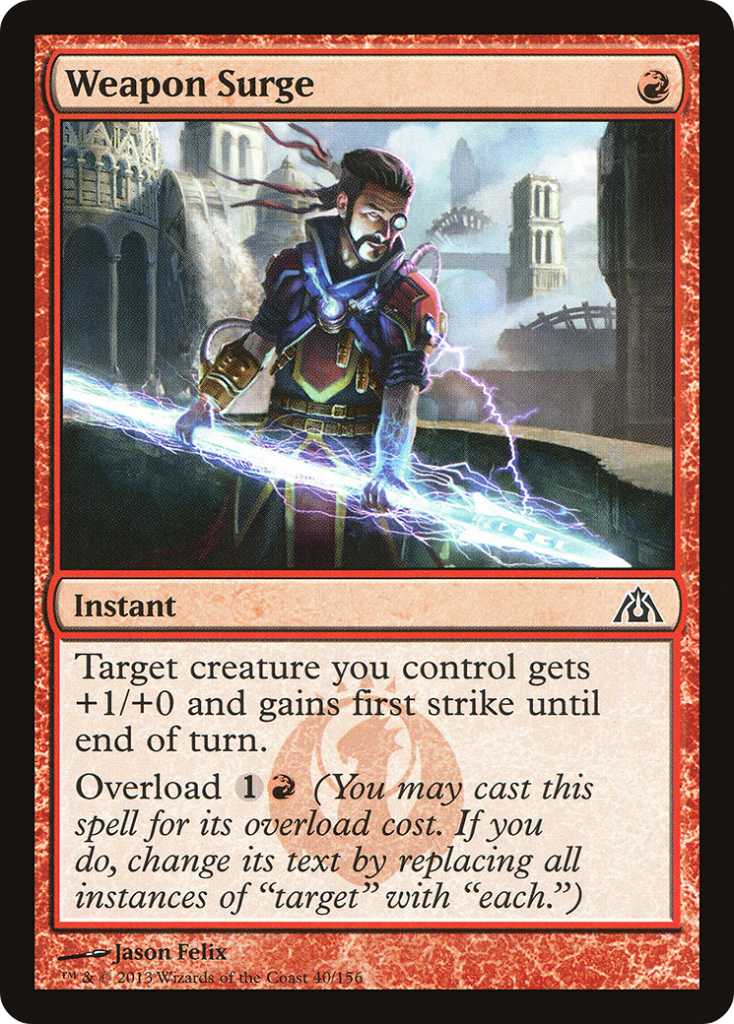

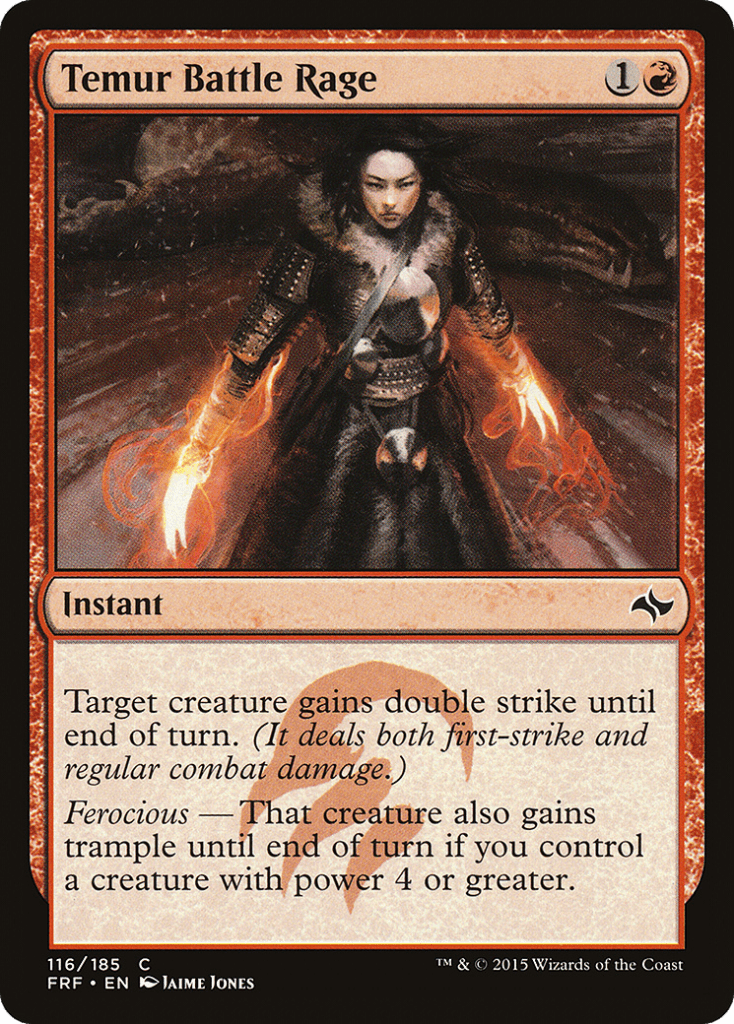
We can see the same design dichotomy (albeit more subtly) with two more outwardly-similar buffs: First Strike and Double Strike.
First Strike is entirely about winning creature combat and trumping a potential trade, so we see the same push for mana efficiency as with green +X/+X tricks. Guided Strike shows how incidental resource generation can be a part of that efficiency equation as well, putting you another card ahead in this theoretical trade.
On the other hand, double strike offers much more potential in pushing-damage-to-face situations. It’s no accident that both of the most iconic tricks that grant it (Temur Battle Rage and Embercleave) also give your target trample!
TRAMPLE

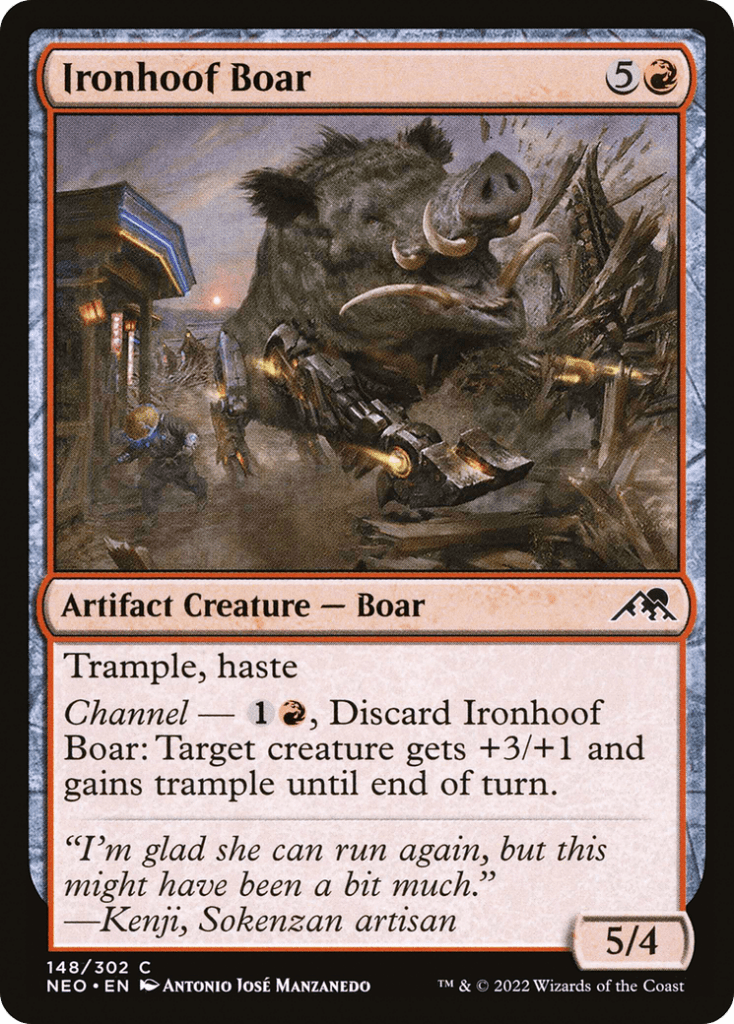
Most tricks that give your creature trample tend to do so as a secondary benefit to other stats and keywords. This means a lot of the standouts will probably appear in other categories — like the “double-strike plus trample” duo we just looked at.
That fact makes sense when you think about Trample as a mechanic. It’s only worth paying for if your combat situation is already very favorable (i.e. the opponent is chumping).
Since we haven’t yet reached the “trample plus deathtouch” combat tricks, pairing the keyword with a chunky power boost has the most upside. It lets us evaluate these tricks in terms of how much damage they directly push to face, like a burn spell for decks with huge non-evasive attackers.
In that context, Indomitable Might stands out for converting 100% of damage to face (and sticking around!) while Ironhoof Boar is a great consistency card — being both a trample trick AND an ideal target for similar tricks if your other creatures don’t show up.
DEATHTOUCH

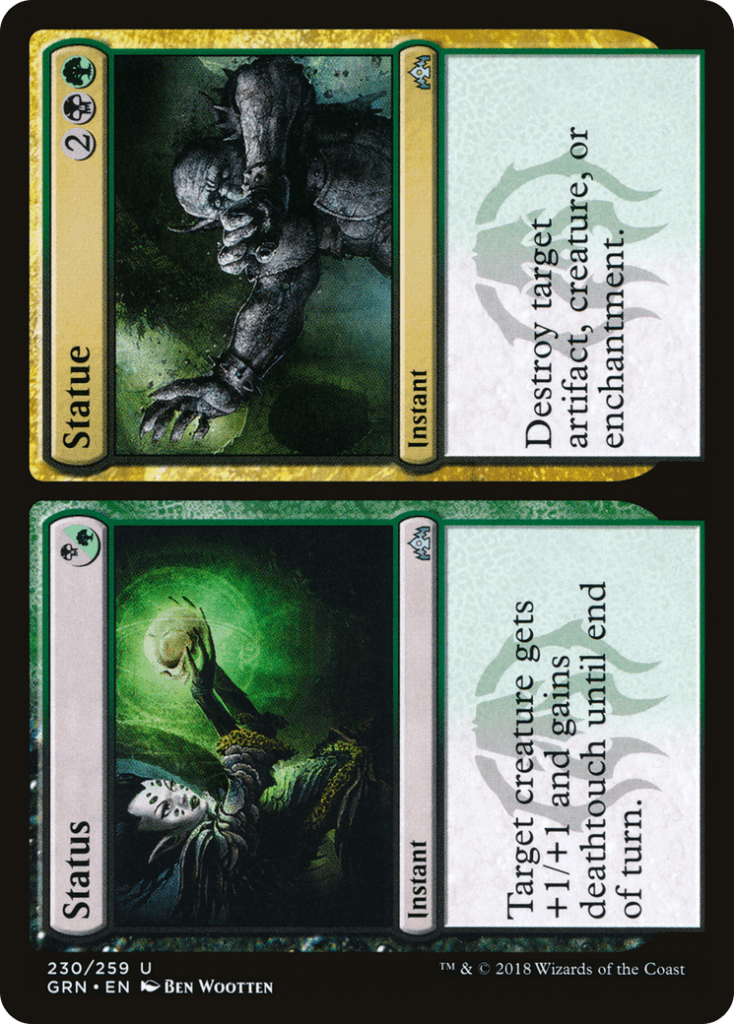

Deathtouch tricks are unlike most others: power and toughness boosts barely matter, and the secondary effects that do matter can vary a lot depending on how you’re trying to use Deathtouch. Unlike Trample, there are actually some very divergent scenarios where this keyword can be useful.
The most obvious uses are trading up in combat to kill a large or Hexproof creature with your chump blocker and improving your outcomes when your first strike or Trample creature gets blocked. Only having Deathtouch matters, so the emphasis is on tricks like Poison the Blade or Status//Statue (which offer extra flexibility or value).
However, team-wide Deathtouch from a card like Topaz Dragon can seriously benefit token or dredge decks, which are throwing around lots of low-quality bodies. And for any deck that aims to exploit non-combat damage with Deathtouch, Touch of Moonglove can potentially have game-winning upside!
LIFELINK
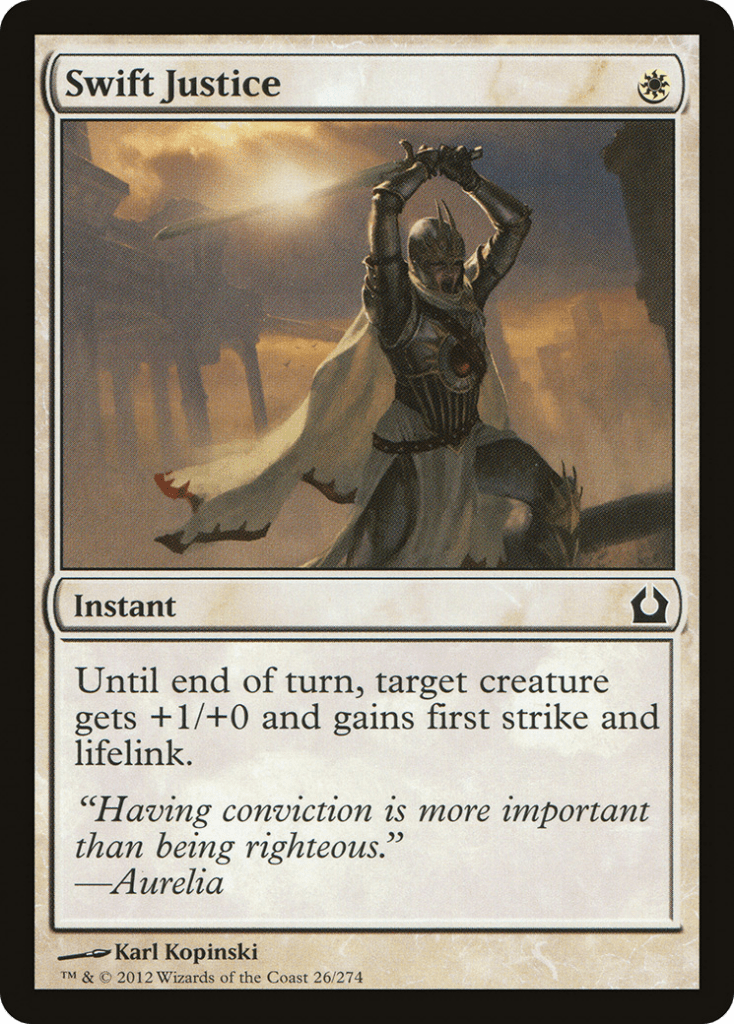

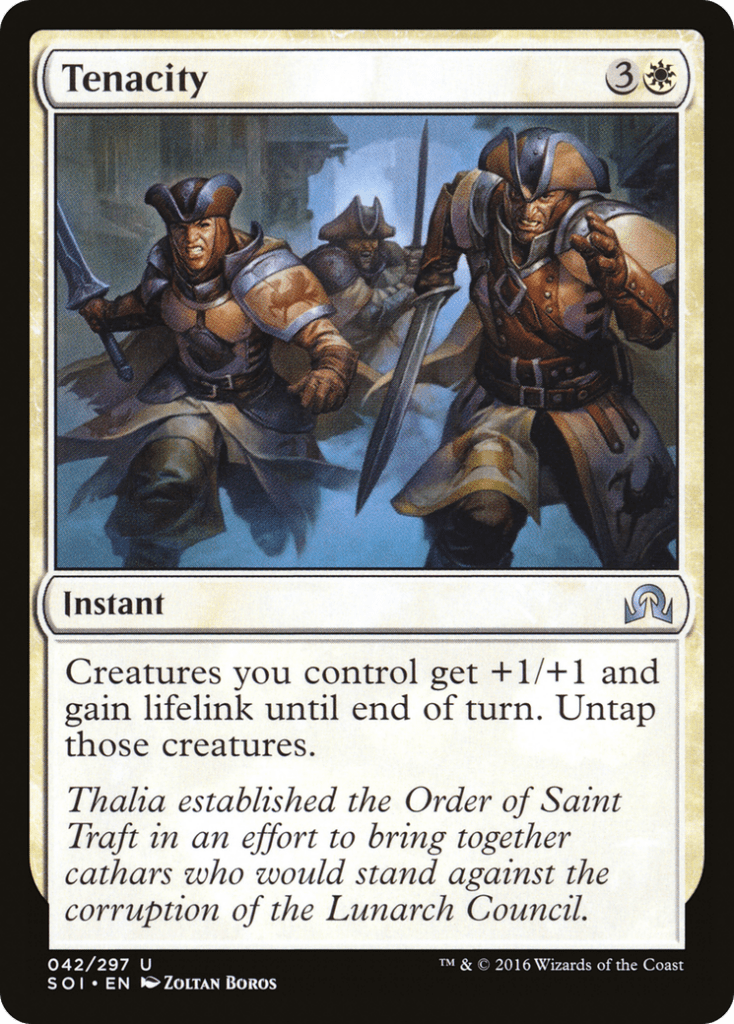
Lifelink is another very unique keyword: it neither improves your outcomes in creature trades nor does it tack on extra damage with unblocked attackers. Outside of very specific synergies, that means these tricks are exclusively used for winning the “race” between two aggressive decks — but they are at least excellent at doing that.
Knowing we want these in a race scenario really helps narrow down the best options. If Lifelink is good in these spots because it’s like getting to attack and block in the same turn, then having the trick also grant Vigilance or untap your creature is like… attacking and blocking two creatures? That’s double the value!
The other thing that’s nice to have is a trade-winning keyword like First Strike or Indestructible, which can help you get ahead on creature count while the lifelink keeps you alive. But really, this is one of those cases where I’ll happily go up a few mana to get the team-wide version instead.
As with the Berserk or Double Strike effects, our plan is to win the game with this card every time we play it — and the kind of life swing Tenacity nets you will absolutely do that.
‘ANY EFFECTS BEFORE DAMAGE?’
I don’t know how often other players really get into heady analysis of different combat tricks, but hopefully this little exercise has shown how deep down the iceberg goes. Despite similar-sounding (and often overlapping) effects, these different buffs do serve very distinct ends.
Are your creatures larger or smaller than average, statwise? How wide does your board get? Are you desperate to find lethal ASAP or can you play the resource game a little? How often do you block, or get blocked?
All of these questions have answers that can lead you toward completely different kinds of tricks, and that’s before you even factor in the more specific mechanical themes of your deck that might unlock some niche support cards.
The tendency to combine multiple buffs on each card and the range of synergies on offer mean that this sort of list can only ever serve as a guideline for your own evaluations, not a definitive tier list. And my decision to go by category means I did have to leave out several famous combat tricks for being TOO unique to fit in anywhere, so it wouldn’t be a complete ranking in any case.
Just try to think about which combat situations your deck finds itself in most often and then consider what type of tricks will most benefit those. Your opponents will be second-guessing every attack and block in no time!

Tom’s fate was sealed in 7th grade when his friend lent him a pile of commons to play Magic. He quickly picked up Boros and Orzhov decks in Ravnica block and has remained a staunch white magician ever since. A fan of all Constructed formats, he enjoys studying the history of the tournament meta. He specializes in midrange decks, especially Death & Taxes and Martyr Proc. One day, he swears he will win an MCQ with Evershrike. Ask him how at @AWanderingBard, or watch him stream Magic at twitch.tv/TheWanderingBard.

